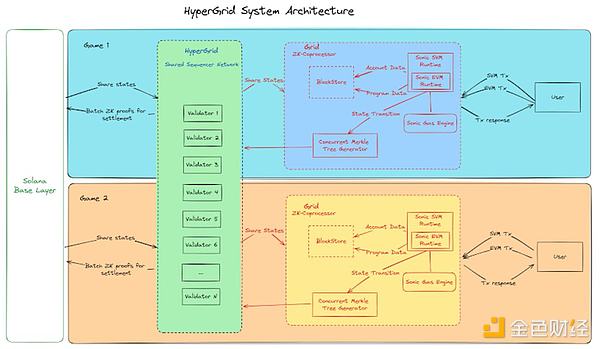Author: Jason Chen, independent researcher Source: X, @jason_chen998
Although the founder of Solana had previously expressed that L2 was not needed, and the "unity" label that the Solana community is most proud of is also based on the fact that it will not create a large number of L2s competing with each other like Ethereum, the landmark event of Solana's launch in this round was still the announcement by the founder of MakerDAO in September last year that it would develop an application chain based on Solana, and subsequent projects such as PYTH also issued their own chains based on Solana. However, it should be noted that these are all side chains after the Solana code fork, and there is no real expansion of Solana. Even though Solana now has dual client support, downtime is still a problem that Solana cannot avoid.
L2 is currently the most effective way to expand Solana and generate network effects, so Solana has to be L2-based. The first atomic SVM chain of the Solana version of "OP Stack" @SonicSVM also officially announced that it has received US$12 million in financing supported by Solana. The definition of atomization is that L2 and the Solana mainnet can be quickly synchronized. Developers can instantly obtain the status and data of the mainnet without repeatedly deploying contracts. For example, game projects can issue assets to the Solana mainnet, but only run the game logic in Sonic L2, thereby enjoying the security of the mainnet and the performance of L2 at the same time.
Sonic’s parent company is @joinmirrorworld, which has been working on the Web3 game development engine platform in the Solana ecosystem for three years. Therefore, Sonic itself is a game chain L2 issued based on Solana, and then its own capabilities are packaged and packaged in a stack manner to a third party to implement Solana’s one-click chain issuance. Therefore, Sonic has occupied the "OP Stack" position in the Solana ecosystem. Several popular games such as Lumiterra in this round have also chosen to be built on Sonic, so it is the kind of cold start that comes with its own dry food, instead of many Infras now building a nest first and then waiting to attract the phoenix.
As mentioned at the beginning of the article, what Sonic and PYTH are doing is different from what MakerDAO wants to do, which is to directly fork the Solana code to build a side chain. Sonic is using the HyperGrid framework to develop Layer2 based on Solana, that is, the final consensus is completed by Solana, so as to expand Layer2 based on Solana. As mentioned above, through atomic means, assets and logic are deployed on the main network and L2 respectively, but they can be linked to each other. If the Solana Foundation also pays attention to politics like the Ethereum Foundation, then Sonic's political correctness should be very high.
SVM is the environment for the Solana network to process transactions and execute smart contracts. The biggest difference from Ethereum's EVM is that SVM is multi-threaded and can allocate a separate Gas fee for each smart contract (Ethereum follows the Gas fee of the entire network no matter what you do). Therefore, the high performance and low fees generated by these two points are enough to meet the needs of the project party, but it is not enough for the head project. For projects with a large number of users and traffic, Gas income is a big piece of fat. Since I can generate tens of thousands of US dollars of Gas every day, why should I contribute it to Solana, Ethereum or other public chains in vain?
Users come to me, not to the public chain, so they can completely build their own chain at the door to eat Gas. If they directly fork the code, it has nothing to do with Solana. This is also what Solana is worried about, and the project does not want to completely break away from its own growth system, so making a Layer2 is a solution that both parties can accept and take what they need.
Secondly, the top projects also need higher customizability and higher TPS, and of course there is also a need to launch chains to raise valuations. Currently, projects such as getCode, Grass, Zeta, and Sphere in the Solana ecosystem are or have already built Solana's side chain or L2 in various ways. Therefore, based on these needs and the current situation, Solana has to embrace Layer2, so Sonic will also expand Solana as its mission, but it is worth noting that Sonic also supports EVM.
The HyperGrid framework is developed using CosmosSDK, and it can also be compared to OP's SuperChain in terms of structure. Each Grid grid is equivalent to a small blockchain that runs semi-autonomously. Users initiate interactions with the corresponding grid. After the grid executes EVM/SVM, changes account data, and processes transactions, it is packaged to the nodes of HyperGrid and sent to the Solana main chain.

In this financing announcement, the largest dealer of Solana, Galaxy Digital, and BITKRAFT of Europe invested. At first glance, BITKRAFT may be unknown, but it is known as the most active game venture capital in the crypto circle, with a total asset management scale of more than 1 billion US dollars. The third game fund alone has reached 275 million US dollars, including YGG, IMX, etc. In addition, OKX, Big Brain, etc. have also participated. Its core participants include Solana, and ecological projects Jupiter, Superteam, etc. I have known the founder @Chrizhuu for two years, and have met and talked with him offline many times. I have also met other founding members such as Jialin and Robinn. The team is serious about doing things. Sonic will also start a series of Odyssey activities soon, so keep an eye on it.
 JinseFinance
JinseFinance





